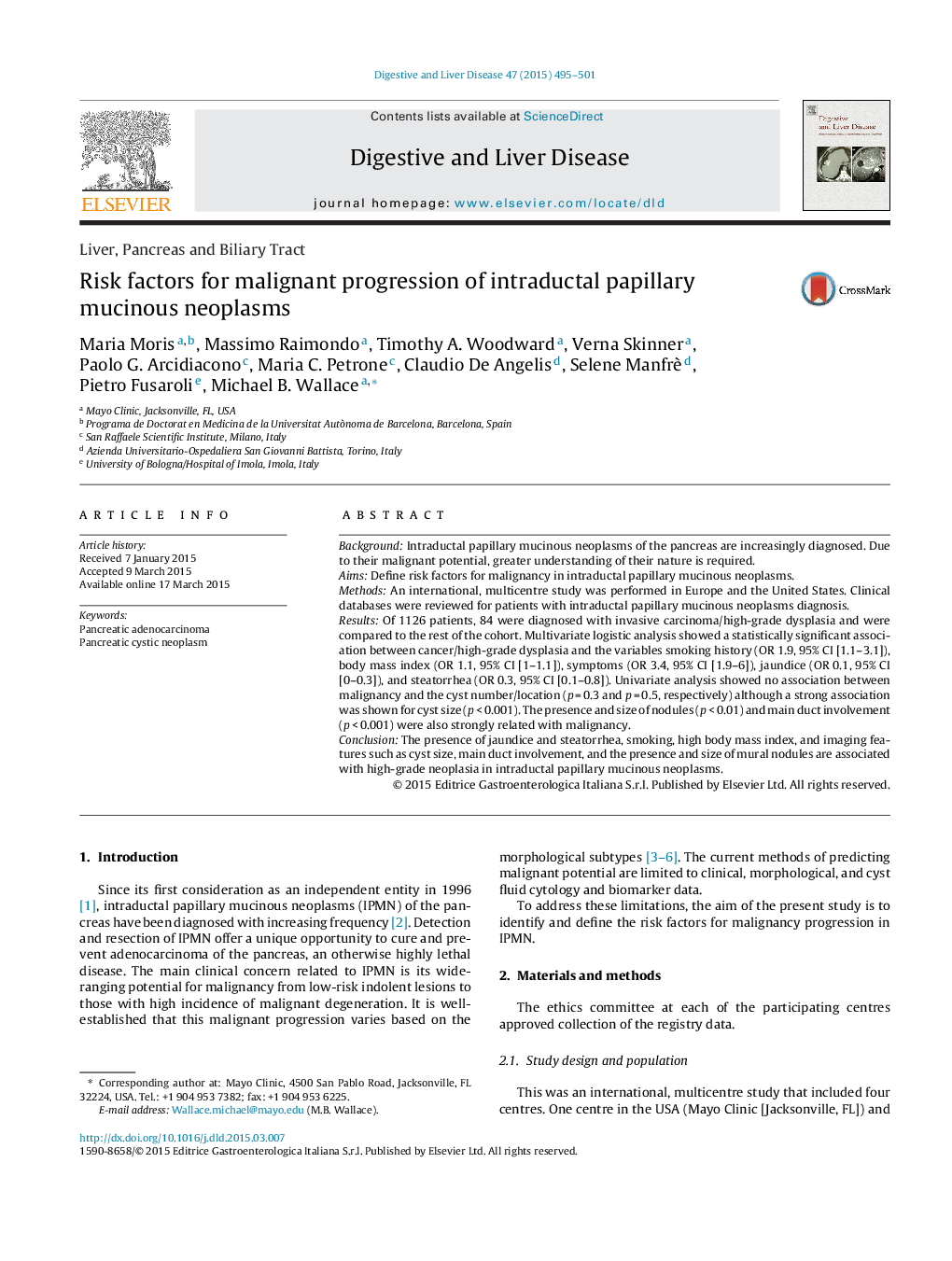| Article ID | Journal | Published Year | Pages | File Type |
|---|---|---|---|---|
| 6088096 | Digestive and Liver Disease | 2015 | 7 Pages |
BackgroundIntraductal papillary mucinous neoplasms of the pancreas are increasingly diagnosed. Due to their malignant potential, greater understanding of their nature is required.AimsDefine risk factors for malignancy in intraductal papillary mucinous neoplasms.MethodsAn international, multicentre study was performed in Europe and the United States. Clinical databases were reviewed for patients with intraductal papillary mucinous neoplasms diagnosis.ResultsOf 1126 patients, 84 were diagnosed with invasive carcinoma/high-grade dysplasia and were compared to the rest of the cohort. Multivariate logistic analysis showed a statistically significant association between cancer/high-grade dysplasia and the variables smoking history (OR 1.9, 95% CI [1.1-3.1]), body mass index (OR 1.1, 95% CI [1-1.1]), symptoms (OR 3.4, 95% CI [1.9-6]), jaundice (OR 0.1, 95% CI [0-0.3]), and steatorrhea (OR 0.3, 95% CI [0.1-0.8]). Univariate analysis showed no association between malignancy and the cyst number/location (p = 0.3 and p = 0.5, respectively) although a strong association was shown for cyst size (p < 0.001). The presence and size of nodules (p < 0.01) and main duct involvement (p < 0.001) were also strongly related with malignancy.ConclusionThe presence of jaundice and steatorrhea, smoking, high body mass index, and imaging features such as cyst size, main duct involvement, and the presence and size of mural nodules are associated with high-grade neoplasia in intraductal papillary mucinous neoplasms.
